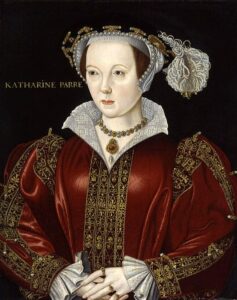
Catherine Parr was the sixth and final wife of King Henry VIII, Elizabeth’s father, and was Elizabeth’s stepmother, the only motherly influence, apart from her governess Kat Ashley, that Elizabeth had.
Catherine Parr was the woman that reunited Henry VIII with his children. She did much to help the King build relationships with children that he had previously ignored. Even Mary, who held widely different religious views than Catherine, was wooed by this warm and intelligent woman, and the precocious Elizabeth, who had suffered the loss of a mother at a young age and also the upsetting recent execution of stepmother (Catherine Howard), warmed to the new Queen.
Although David Starkey thinks that Catherine’s role in reuniting the happy Tudor family (Henry and his childen) is exaggerated, he still devotes a whole chapter in his book “Elizabeth” to Catherine Parr because she played such an important part in Elizabeth’s “apprenticeship”, having been left as Queen Regent in Henry’s absence and having a close relationship to her stepchildren. He writes of how she and Elizabeth exchanged presents and letters, although he states that Catherine was “never more than a moon to Henry’s sun” – Elizabeth completely idolised her father.
We know that Elizabeth corresponded with her stepmother because we have letters, such as the one Elizabeth wrote in “courtly” Italian in July 1544, at the age of 10.We also know that Elizabeth took the time and care to translate Margaret of Angouleme’s French religious poem, “Le Miroir de l’Ame Pecheresse” into English for Catherine – no mean feat for an 11 year old! Elizabeth also did a triple translation of her stepmother’s published work, “Prayers and Meditations”, which she presented to her father the King.
Life after Henry
As I have said, Elizabeth idolised her father so his death when she was just 13 years old must have hit her hard. Henry did look after his daughters in his will, giving each of them a considerable income and naming them as successors after their brother Edward. He also looked after Catherine, allowing her to live the life she wanted and also allowing her to take in her beloved stepdaughter Elizabeth. Starkey points out how sensible this was as they both shared common interests – religion and learning – and Elizabeth was in need of a parent but it did lead to problems.
The problem was Thomas Seymour, uncle of Edward VI and brother of the late Jane Seymour. He had been attracted to Catherine Parr previously in 1543 but had had to give her up when the King became interested in her. Now was his chance to marry the Dowager Queen and be close to a likely successor to the throne, Elizabeth. He married Catherine just months after Henry VIII’s death and then set about abusing the teenage Princess Elizabeth.
We know that Seymour had a key to Elizabeth’s bedroom and that he would let himself in early in the morning , somtimes clad only in his nightshirt. He would kiss her, tickle her and stroke her buttocks, and, on one occasion in the garden, he even had Catherine hold Elizabeth while he slashed her gown to pieces. Why Catherine allowed this behaviour, which she knew about from Kat Ashley and which she even took part in (getting into bed with Elizabeth and Thomas), we cannot even begin to understand. Did she fear losing her husband? Was it because she was pregnant and just wanted her husband kept happy? It’s hard to know. What we do know is that in the end, in May 1548, Catherine sent Elizabeth away to stay at Sir Anthony Denny’s home. This may have been both an attempt to save her marriage and to protect the young princess’ reputation.
Even though Catherine and Elizabeth had parted under such a cloud of scandal, it is obvious from their correspondence that they missed each other. Unfortunately, Catherine died just three months after sending Elizabeth away. It seems that she died of puerperal fever (childbed fever) just a few days after giving birth to Mary, her first child, on 30th August.
Although Catherine Parr was only Elizabeth’s stepmother for around 5 years, I think that she had a major influence on the young princess. Catherine was a strong, intelligent and independent woman who had published her own work and who had her own thoughts and opinions. On the whole, she was a good role model for a princess, although her behaviour over Thomas Seymour’s sexual abuse of Elizabeth leaves a lot to be desired. Kat Ashley was more of a mother figure to Elizabeth than Catherine ever was, but Catherine was definitely an intellectual infuence.
What do you think? Did Catherine Parr have a major influence over Elizabeth or was their relationship too short? Did she help shape Elizabeth into the woman and monarch she became?
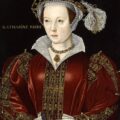
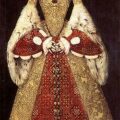
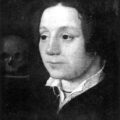
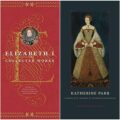
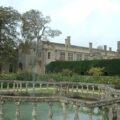
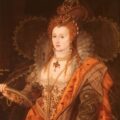
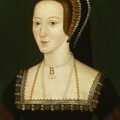
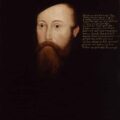
Your article is indeed inspiring. Going on a slight whim here, please take a look at Queen Elizabeth’s closest friend Bess of Hardwick, Derbyshire. She happens to have a daughter named Francis Cavendish born 19th of June 1548. Strangely indicated as born around the time of the scandal / departure of Elizabeth from Catherine Parr’s residence. Baby Mary Seymour was born September 1548. Yet the resemblance to Francis and Catherine are uncanny. With Francis having little to no resemblance at all to Bess or her husband. Therefore Elizabeth was queen 10 years from that date and was in charge of all UK matters. She relied on Bess so greatly, bess held Mary queen of Scott’s captive! With Elizabeth’s guilt over what had occurred and how this impacted her entire (virgin queen) future. Elizabeth may just have sought to protect this little girl and give her a better life under the circumstances of her love for not only Catherine but Thomas, and the fact this beautiful child was as noted seemly a hindrance during her early years and then disappeared without trace. If Elizabeth did indeed seek to care for her through Bess, no one would have ever required to use the Seymour inheritance. It’s all just a thought with some uncanny resemblance’s.. it is 100% clear Poor Catherine died of a broken heart, which saddens me greatly, i believe they are all together with so much happiness now..
Thank you for your comment. I don’t think there’s an evidence at all to suggest that Bess’s daughter, Frances, was actually Mary Seymour. Bess’s marriage to Cavendish took place at the Grey family home, Bradgate Park, and it has been suggested that Bess was serving Frances Grey (née Brandon) at the time, so that would by a reason for her calling her daughter Frances. I just can’t see any link between Bess and Catherine or Bess and Elizabeth at the time.